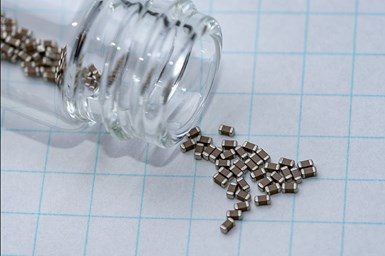Semi-Bright Pure Tin Electrolytic Plating Solution
Technic’s Ceramistan 1031 is a pure tin electrolytic plating bath specially formulated for sensitive ceramic components, connectors, pins and LED/MELF resistors.
Technic (Cranston, Rhode Island) announces the release of Ceramistan 1031, a pure tin electrolytic plating bath specially formulated for sensitive ceramic components, connectors, pins and LED/MELF (light emitting diode/metal electrode face components) resistors. The Ceramistan 1031 process produces a dense, small grain deposit that is said to provide excellent solderability, even after exposure to extended steam-age testing. The Ceramistan 1031 process offers several key cost-saving features including reduced coupling, longer bath life and reduced oxidation.
Ceramistan 1031 also is said to significantly reduce or even eliminate spattering during reflow, a problem that often occurs with a standard tin bath. The process is compatible with all standard barrel and vibratory plating lines, and Technic’s patented Spouted Bed Electroplater (SBE).
According to Eric Smith, research and development chemist at Technic, Ceramistan 1031 is an ideal solution for applications requiring pure tin, and the process performs well in a full range of applications with consistent quality of the deposit and performance. With a longer bath life, reduced coupling, and reduced oxidation, Ceramistan 1031 has reportedly shown significant improvements to the quality, cost and performance in pure tin plating for electronic applications.
Related Content
-
Innovation in Plating on Plastic
Plating on advanced plastics solution offers improved adhesion, temperature resistance and cost savings.
-
Possibilities From Electroplating 3D Printed Plastic Parts
Adding layers of nickel or copper to 3D printed polymer can impart desired properties such as electrical conductivity, EMI shielding, abrasion resistance and improved strength — approaching and even exceeding 3D printed metal, according to RePliForm.
-
How to Choose Between Sulfate and Chloride-Based Trivalent Chromium
There are several factors to consider when choosing between sulfate and chloride-based baths for trivalent chromium plating. Mark Schario of Columbia Chemical discusses the differences and what platers should keep in mind when evaluating options.














